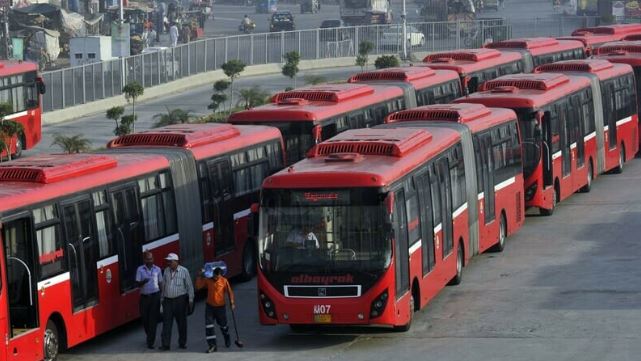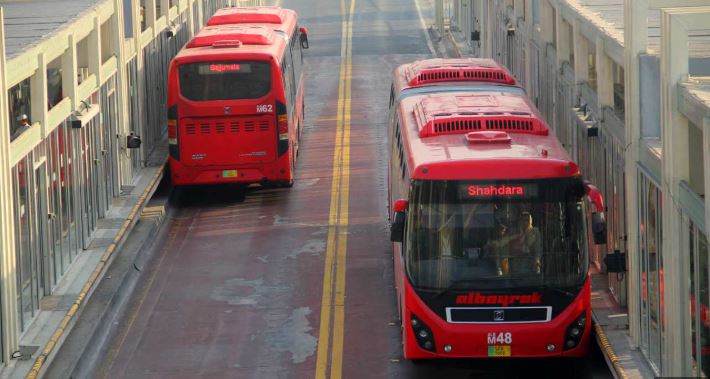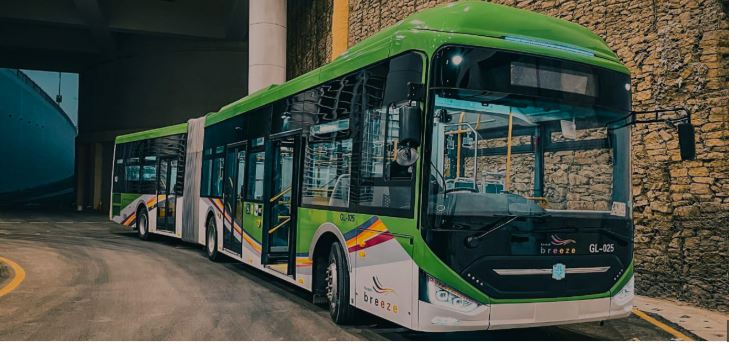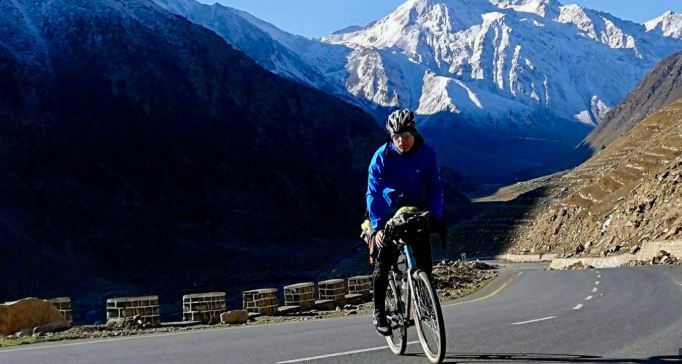Introudction
What is the best sustainable transport system in Pakistan? With growing pollution, traffic congestion, and environmental concerns, finding greener ways to get around has become more important than ever. Sustainable transport aims to reduce carbon emissions, save energy, and offer more affordable and accessible options for everyone. In Pakistan, solutions like electric rickshaws, bus rapid transit (BRT) systems, and ride-sharing services are making a positive impact. This post will take a closer look at the top sustainable transport systems in Pakistan and explore how they’re shaping a more eco-friendly future for the country.
Table of Contents
What is Sustainable Transport?
Sustainable transport refers to modes of transportation that prioritize environmental protection, energy efficiency, and the well-being of future generations. It includes a wide range of transportation systems designed to reduce negative environmental impacts while promoting health, efficiency, and accessibility. The primary objective of sustainable transport is to reduce reliance on fossil fuels, minimize pollution, conserve resources, and improve overall quality of life for urban and rural populations alike.

Sustainable transport systems are not only energy-efficient but are also intended to have low environmental impacts, supporting the global effort to combat climate change. These systems aim to ensure that transportation methods are both eco-friendly and socially inclusive, offering accessible, affordable, and efficient options for all users, regardless of their socio-economic status.
Key Characteristics of Sustainable Transport Systems
- Reduced Carbon Emissions: A key feature of sustainable transport is its ability to reduce the carbon footprint of urban mobility. Sustainable transport options limit the release of greenhouse gases (GHGs) and air pollutants into the atmosphere, thereby contributing to the reduction of global warming and enhancing urban air quality.
- Energy Efficiency: Sustainable transport systems emphasize the use of renewable and cleaner energy sources, such as electric power, solar energy, and hydrogen, to reduce dependence on fossil fuels. The goal is to transition to energy-efficient systems that minimize resource depletion and ensure long-term sustainability.
- Accessibility: For a transport system to be truly sustainable, it must provide convenient, affordable, and safe mobility options for all individuals, including those from marginalized or low-income communities. Ensuring that transportation is accessible to all promotes inclusivity and reduces social inequality.
- Integration with Urban Planning: Sustainable transport systems must be thoughtfully integrated into the broader framework of urban planning. This includes creating well-connected and intermodal transport systems, such as bus networks, bike lanes, and pedestrian-friendly infrastructure, ensuring that different modes of transport are seamlessly connected and well-managed.
In Pakistan, the need for sustainable transport is driven by urgent challenges such as increasing air pollution, congestion in urban centers, and the scarcity of affordable public transportation options. The focus is not only on innovative solutions but also on addressing these pressing problems that hinder economic, environmental, and social growth.
Sustainable Transport Systems in Pakistan: An Overview
Pakistan has started to take significant steps toward building sustainable transport systems that reduce emissions, alleviate traffic congestion, and promote greener mobility. Various initiatives have been implemented in key cities, demonstrating the country’s commitment to sustainable transportation solutions. These efforts include the introduction of public transport systems, electric vehicles, and infrastructure developments to reduce the environmental impact of transportation.
1. Lahore Metrobus System: A Step Towards Eco-Friendly Urban Transit
The Lahore Metrobus System, inaugurated in 2013, is one of Pakistan’s most notable contributions to sustainable urban mobility. Serving the country’s second-largest city, it has revolutionized public transportation by offering a reliable, eco-friendly alternative to private cars.

Key Features of the Lahore Metrobus:
- Bus Rapid Transit (BRT): The system operates on dedicated lanes, ensuring that buses avoid traffic congestion, which significantly improves travel time, especially during peak hours. This provides efficient and time-saving transit, encouraging more people to use public transport rather than private vehicles.
- Low-Emission Vehicles: The buses are designed with environmentally friendly technology, which significantly reduces emissions compared to traditional buses and cars. This shift has a positive impact on air quality in Lahore, one of Pakistan’s most polluted cities.
- Affordable and Accessible: The Metrobus is an affordable mode of transport, with low fares making it accessible to people across different income groups. Its widespread accessibility, especially in underserved areas, ensures that even low-income individuals can benefit from a sustainable transit option.
While the Metrobus isn’t fully carbon-neutral, its contribution to reducing car traffic has alleviated congestion and reduced emissions, making it a vital tool for improving urban mobility and reducing environmental damage.
2. Karachi Green Line: A Modern Solution to Karachi’s Transport Woes
Karachi, Pakistan’s largest city, has long struggled with inadequate public transportation and severe traffic congestion. The Karachi Green Line, a Bus Rapid Transit (BRT) system, is designed to address these challenges by offering a cleaner, faster, and more efficient alternative to private car usage.

Key Features of the Karachi Green Line:
- Dedicated Bus Lanes: Like the Lahore Metrobus, the Green Line operates on dedicated bus lanes that prevent buses from being delayed by traffic. This ensures a consistent, reliable service for commuters and reduces the travel time significantly.
- Eco-Friendly Buses: The buses on the Green Line run on compressed natural gas (CNG), a cleaner alternative to the traditional diesel and petrol fuels. This reduces emissions, contributing to cleaner air in Karachi and helping to tackle the city’s severe air pollution.
- Cost-Effective: The Green Line offers affordable ticket prices, making it an appealing option for the daily commute, especially for lower-income individuals who otherwise might rely on private vehicles or unregulated forms of public transport.
Despite facing delays in its development, the Karachi Green Line has the potential to transform the city’s transport landscape, providing a much-needed sustainable option to reduce traffic congestion, pollution, and reliance on private cars.
3. Electric Rickshaws: A Sustainable Alternative for Short Journeys
Electric rickshaws, or e-rickshaws, have become an increasingly popular mode of transport in Pakistan. These small, battery-powered vehicles are ideal for short-distance travel in congested cities and offer a cleaner, greener alternative to traditional fuel-based rickshaws.
Benefits of Electric Rickshaws:
- Zero Emissions: Electric rickshaws produce no emissions, making them an excellent choice for reducing air pollution in urban areas. This is particularly beneficial in cities where traditional rickshaws contribute to poor air quality.
- Low Operating Costs: Compared to petrol or diesel rickshaws, electric rickshaws are much cheaper to operate and maintain. They have fewer mechanical parts, which leads to lower maintenance costs and makes them more affordable for drivers.
- Affordable for Passengers: E-rickshaws provide a low-cost travel option for passengers, especially when compared to traditional taxis or motorized rickshaws. This makes them an attractive solution for short-distance travel in crowded cities.
While there are regulatory and infrastructural challenges, such as the lack of charging stations and clear regulations for e-rickshaws, they represent a promising development in Pakistan’s journey toward sustainable transport, particularly for local, short-distance mobility.
4. Carpooling and Ride-Sharing Apps: Eco-Friendly and Convenient
The emergence of carpooling and ride-sharing services in Pakistan is transforming how people think about commuting. Ride-sharing platforms like Uber and Careem provide an eco-friendly, cost-effective alternative to driving alone, reducing the number of vehicles on the road.
Key Benefits of Carpooling and Ride-Sharing:
- Reduced Carbon Footprint: Carpooling allows multiple passengers to share a ride, which reduces the total number of vehicles on the road. This results in lower carbon emissions and alleviates congestion in busy cities.
- Cost Savings: By sharing a ride, passengers can reduce their individual transportation costs. Ride-sharing services also offer competitive pricing compared to traditional taxis, making them an affordable choice for regular commuters.
- Convenience: Ride-sharing platforms offer the convenience of booking rides on-demand through smartphone apps. This provides users with flexible travel options without the need to own or maintain a personal vehicle.
Although the adoption of ride-sharing in Pakistan is still growing, it has the potential to ease traffic congestion, reduce pollution, and improve urban mobility as more people shift away from individual car ownership.
5. Cycling Initiatives: A Sustainable Solution for Health and Mobility
Cycling is one of the most sustainable modes of transport, offering a clean, healthy alternative to motorized travel. In cities like Lahore, Islamabad, and Karachi, cycling is gaining popularity as both a form of exercise and a way to reduce urban pollution.

Benefits of Cycling:
- Zero Emissions: Cycling is a completely eco-friendly mode of transport, producing no emissions. This makes it an excellent choice for reducing urban air pollution and combating climate change.
- Health Benefits: Cycling is a great form of physical exercise, helping individuals improve cardiovascular health, maintain a healthy weight, and reduce the risk of chronic diseases such as diabetes and hypertension.
- Cost-Effective: Bicycles are much cheaper to purchase and maintain compared to cars or motorcycles. For individuals who can’t afford other forms of transport, cycling offers an affordable, sustainable alternative.
Although the development of cycling infrastructure is still in its early stages, initiatives like dedicated bike lanes and bike-sharing programs are gradually making cycling a more viable and sustainable option for daily commutes in urban areas.
Challenges to Sustainable Transport in Pakistan
Despite the progress, several challenges hinder the widespread adoption of sustainable transport in Pakistan. These include:
- Inadequate Infrastructure: Many cities still lack the necessary infrastructure to support sustainable transport systems, such as bike lanes, charging stations for electric vehicles, and well-integrated public transport networks.
- Traffic Congestion: Pakistan’s urban centers are often plagued by traffic congestion, which not only wastes time but also contributes to high levels of air pollution. This makes it difficult to implement efficient sustainable transport solutions.
- Public Awareness: There is a lack of awareness about the environmental and personal benefits of sustainable transport, which can deter people from adopting alternative transportation options.
- Regulatory Issues: The regulatory framework for electric vehicles, ride-sharing, and alternative transport solutions is still underdeveloped, which can slow down the growth of these eco-friendly options.
The Future of Sustainable Transport in Pakistan
Despite these challenges, the future of sustainable transport in Pakistan is promising. The country’s growing urban population and increasing awareness of climate change are driving demand for greener, more efficient transportation options. The government and private sector are increasingly investing in sustainable transport infrastructure, electric vehicles, and clean technologies. By continuing to invest in these initiatives and addressing the challenges head-on, Pakistan has the potential to build a more sustainable and environmentally friendly transportation system.
Government Initiatives
- Electric Vehicle (EV) Policy: The government has introduced policies to encourage the use of electric vehicles, offering incentives for manufacturing and purchasing EVs.
- Public Transport Investments: The government is expanding BRT systems and metro services in major cities, aiming to reduce emissions and provide affordable, efficient public transport options.
- Smart City Urban Planning: There is a growing emphasis on developing smart cities with integrated, sustainable transport solutions that prioritize eco-friendly mobility options.
Private Sector Involvement
Private companies are playing an important role in transforming Pakistan’s transport landscape, with investments in electric vehicles, ride-sharing services, and infrastructure projects. The growth of electric rickshaws and ride-sharing platforms represents a positive shift toward more sustainable alternatives.
Conclusion: The Path Forward for Sustainable Transport in Pakistan
Pakistan is making significant strides toward creating a more sustainable and environmentally friendly transport system. From the development of BRT systems like the Lahore Metrobus and Karachi Green Line, to the growth of electric rickshaws and cycling initiatives, the country is moving in the right direction. However, continued investment in infrastructure, regulatory reforms, and public awareness campaigns will be essential to overcoming the challenges facing sustainable transport adoption. By prioritizing sustainable transport solutions, Pakistan can build a greener, more efficient, and inclusive transportation network for the future.
FAQ
Question1. What is the Lahore Metrobus System?
Answer. The Lahore Metrobus is a Bus Rapid Transit (BRT) system that offers efficient and affordable public transportation using dedicated lanes, energy-efficient buses, and sustainable practices.
Question2. Are electric rickshaws sustainable?
Answer. Yes, electric rickshaws are environmentally friendly as they produce no emissions and have lower operating costs compared to traditional fuel-powered rickshaws.
Question3. How can I support sustainable transport in Pakistan?
Answer. You can support sustainable transport by using public transport, carpooling, using ride-sharing services, or even cycling for short trips.




